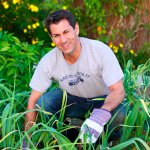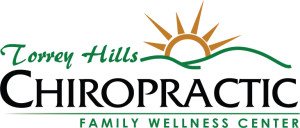“Study Drugs”
 Did you know that your child has an 8 to 36% chance of using some sort of “Study Drug” these days once they get to high school? Yep, it’s now unfortunately safe to say that these stressful and changing times have officially trickled down to our children. Did you know that last year was the most difficult year in US History to get into a 4-year college? How about that the expected Freshman GPA entry to get into UCLA was a 4.1? Some may ask, how can someone get a 4.1, when that old 4,3,2, 1 system earns you a 4.0 at best? Times have seriously changed. Or have they?
Did you know that your child has an 8 to 36% chance of using some sort of “Study Drug” these days once they get to high school? Yep, it’s now unfortunately safe to say that these stressful and changing times have officially trickled down to our children. Did you know that last year was the most difficult year in US History to get into a 4-year college? How about that the expected Freshman GPA entry to get into UCLA was a 4.1? Some may ask, how can someone get a 4.1, when that old 4,3,2, 1 system earns you a 4.0 at best? Times have seriously changed. Or have they?
Competition, success, independence, being your own boss, Capitalism, striving to be the “best you can be”, have all been the American way, but these days, many kids tell me that you “basically have to be “perfect” to get into college these days, so you can actually move away from home. So, what defines “perfect” these days. According to a number of high school Juniors and Seniors I interviewed, this was their formula: good grades = 4.0 or above. One can now go beyond an A, or 4.0, if they take a certain type of college level course, referred to as an AP course. Here, the common 4,3,2,1 scale is replaced with a 5 (A+) point one, where an A equals a 5, rather than a common four point score. Getting a normal “B” in an AP earns you an A (4.0) and so on. But, these courses are tougher than even the old Honors classes and typically involve extra hours of homework on top of all of the other work from other classes. Next, add playing a sport, doing some sort of mandatory community service, be in some sort of club; have some sort of social life all while hoping that their body will stop changing so they can finally feel somewhat stable. Oh, and a boyfriend or girlfriend is also a goal. That is the definition these teens told me what, in their minds, are happy high school days and they have the fear that anything less will result in a “Failure to Launch”. In other words, teens fear leaving home these days more than ever before. “It’s scary out there”, they tell me.
So, what do many teens do these days to “make that mark” and what are they feeling inside? Fear is both normal in adolescence, but now the reality of growing up and being successful is tougher than ever. So, teens these days are also angry that they feel they need to be “perfect” to succeed, or at least “perfect” in today’s standard. They also wants us, the parents, to be proud of them and they feel guilty when they feel they are letting us down, and themselves. They also want freedom, so many assume that getting those high grades will also equal a later curfew time. So, aside from all the “normal” anxieties of adolescence, such as being popular, funny, strong, and “kewl”, they have all this other stuff on their already full plates. Below are the top ten “High School Stressors” identified in a recent poll of a local prep high school:
- Grades;
- Amount of homework;
- Academic competition;
- Not enough time ;
- Getting into college;
- Procrastination;
- The future;
- Living up to parent’s expectation;
- Doing well in sports;
- Fitting in socially.
What a list. The most anxiety is clearly experienced by the Junior class as they are about ready to apply to college. Behind them are the Sophomores and then the Freshman. Seniors are less anxious about grades because most have figured out if they have what it takes to get into college and then are still in denial that they are going to be leaving the comforts of home this Fall. Reality usually hits during their Graduation and summer is where the new excitement and fears about college come to the surface. But, in the meantime, they have to “deal” with the realities of the times, so what do they do? Most grin and bear it, but unfortunately, some result to “extreme” measures due to anxiety as one student threw me this term. Another high school Senior told me that he saw the “study drug” issue no different then how athletes use steroids to enhance their physicality. In this case, however, it has to do with “refining focus” to study longer and harder. Spoken from a student who currently is taking 4 AP classes, he laughed and told me that he just doesn’t ever sleep. Instead, he takes 3 to 4 doses of his non-prescribed study drug, which he gets from a dealer at school, and “presto”, he is getting straight A+’s. So, what’s the matter with this picture?
Where do we begin? Rationalizing the use of illicit drugs to get through high school these days for some is just very sad. How about, it is also illegal and dangerous for any child or adult to be buying or taking any sort of medication without both the advise and management of a doctor. Another student told me that she was so sleep deprived after taking her daily dose, she fell down a flight of stairs at her house and broke her arm. How about the notion of it being “unfair” to the majority of high school students who manage to still get good grades but survive by getting enough sleep, exercise, having a balanced diet, and perhaps sharing their feelings of frustration and fears with their peers and managing to get into a decent college?
Granted, if a teenager is truly experiencing symptoms such as anxiety, difficulty concentrating, severe procrastination, anxiety, or even Panic Attacks, they may need someone to talk to or, if that does not work, some form of prescribed medication to help them through a difficult time. But, to buy a drug to combat feelings and possible symptoms that most kids these days experience in high school, is probably the most concerning part of this “study drug” phenomenon. To make matters even worse, many of the students I interviewed told me that their parents knew they were doing them and supported their usage. I was also told that the use of “study drugs” typically extends into college, and if indeed a “gateway” drug, could further reinforce the use of future substances to “get ahead or survive in what is feared as too much competition.
I am not claiming to have the answer, but there are enough high school and college students out there who are using “Study Drugs” that we need to do something to help students focus on school and their futures without endangering themselves. Below are some disturbing facts about “Study Drugs”:
- The term “study drugs” came into widespread use in the late 1990s to describe drugs, particularly prescription stimulant medications, which students use to increase concentration and stamina. The term is most often associated with the illegal use of Ritalin® and Adderall® by people who acquire them through any means other than a legitimate prescription.
- Adderall, Ritalin and Concerta—have carved themselves a niche in competitive college and high school campuses without attracting a particularly negative or criminal connotation.
- In one study of 193 student respondents, 13.5 percent have used “study drugs” and the vast majority—87.2 percent—of these students did not have a prescription. Of this group, 34.5 percent claimed one-time use, while 11.5 percent use “study drugs” once a month and 7.7 percent use on a weekly basis. A third of respondents specified particular usage habits, predominantly concentrated around finals and major project deadlines.
- The drugs, Ritalin and Adderall, are used illegally to enhance studying by as many as one in five college students, according to a November 2002 study published in The Johns Hopkins News-Letter.
- Experts say Adderall and Ritalin help students focus longer and get their work done quicker.
- Ritalin and Adderall also can serve as gateway drugs for further substance abuse and, according to a recent UM study on laboratory mice, could make cocaine addiction harder to beat.
- With 4 to 6 percent of Americans diagnosed with ADD, the drugs are widely prescribed and easy to come by. Federal drug enforcers list Adderall and Ritalin among their most tightly regulated prescription drugs.
- Adderall has found popularity as a study drug. Adderall is a widely used prescription medication for attention deficit disorder and narcolepsy. It treats some of the same conditions as Provigil and has some similar effects.
- Provigil (aka modafinil and armodafinil) improves function in several cognitive domains, including working memory and episodic memory, and other processes dependent on prefrontal cortex and cognitive control.
- Ritalin is likewise a stimulant employed in treatment of attention deficit disorder, and it is also used as a study drug.
- Estimates of the percentage of students who use prescription stimulants for nonmedical reasons vary between 8%-36%.
- Ritalin and Adderall are closely related to illegal “street” drugs, including dextroamphetamine (Dexedrine, or “dexies”), methamphetamine (“crystal meth”) and cocaine.
- Possible side effects include insomnia, nervousness, drowsiness, dizziness, headache, blurred vision, tics, abdominal pain, nausea, vomiting, decreased appetite, weight loss, irregular or fast heartbeat, confusion, and liver damage (characterized by yellowing of the skin or eyes, nausea, abdominal pain or discomfort, unusual bleeding or bruising, and severe fatigue).
- Possible side effects of Adderall include irregular heartbeat, increased blood pressure, restlessness or tremor, anxiety or nervousness, headache, dizziness, insomnia, dryness of the mouth or unpleasant taste in the mouth, diarrhea or constipation, impotence or changes in sex drive.
- The exact number of people who abuse prescription stimulants as study aids is unknown. However, in its 2005 report, the International Narcotics Control Board states that one out of 10 American teenagers has used prescription stimulants (Ritalin and/or Adderall) without a doctor’s prescription. In addition, according to the 2003 National Survey on Drug Use and Health (NSDUH), 6 percent of Americans age 18-25 abuse prescription medications for nonmedical use. Prescription drugs are now the second largest group of drugs abused in the United States, after cannabis.
- Another issue arises from mixing Adderall, Ritalin, or Concerta with other prescription drugs. A cocktail of drugs may do more harm than good and could have serious health implications. There are risks involving any type of self-medication, especially with chemicals that are illegal narcotics. There is a reason for the “no refill” policy for amphetamines in the U.S. When the drug is prescribed, it is done so under careful monitoring due to the intensity of the drug, the side effects, and the potential for abuse.
- Another issue with these drugs is that they are easy to crush into powder and insufflate. Some studies show that even a cocaine connoisseur (if you will) would have trouble distinguishing the effects of a line of Adderall and a line of cocaine.
Dr. Kanner’s Tips:
- Talk with your kids about “Study Drugs” and warm them against them.
- Work with your kids on how to better balance their lives during high school.
- Encourage good health habits: eating, sleeping, exercise, and balance. Offer to help.
- Talk with them about their anxieties about the future, including college, and be supportive and encouraging.
- Seek medical advice if your child is experiencing symptoms which might suggest an anxiety, depressive, or attention-deficit disorder.
______________________________________________________________
Dr. Keith Kanner is a Licensed and Board Certified Clinical Child, Adolescent, and Adult Psychologist and Psychoanalyst. In addition to a full-time private practice in Rancho Santa Fe, California, he is an Assistant Clinical Professor of Psychiatry in the School of Medicine at the University of California San Diego where he teaches both human development and also trains medical students how to better understand and relate to their patients. He also serves as the Director of Clinical Counseling for La Jolla Country Day School in La Jolla, California, and is a Clinical Professor at The San Diego Psychoanalytic Society and Institute. Dr. Kanner also sits on the National Board of Directors for Kids Korps USA, which is the largest organization in the country that teaches children and adolescents the importance of volunteering to help the community at large. As a father of three children, he is also a dedicated baseball, football, and soccer coach.










You must be logged in to post a comment Login